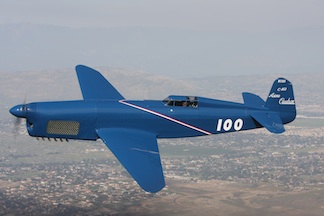Speed has always been a drug, of sorts. It has captivated mankind for as long as he has stood on two legs and nowhere has the urge to see who is the fastest been stronger than in aviation. And at no time has that competition been more fierce than during the 1930s, the uncontested golden age of air racing. During a single decade, which theoretically should have seen technological progress grind to a halt because of the Depression, the aircraft industry blossomed and speeds rose astronomically. The National Air Races created super stars, both mechanical and human that were so well known that they rivaled baseball stars in their celebrity.
There were three primary races. The Bendix was a cross-country race usually run from Los Angeles to the site of the National Air races in Cleveland. The Greve was a pylon race limited to engines under 550 cubic inches and the Thompson was a free-for-all, run-what-you-got, unlimited race around the pylons where the only rule was that the winner had to cross the line first without cutting pylons.
Almost all of the aircraft in the pre-war races were purpose-built, hand-crafted, one-of-a-kind machines that were essentially three-dimensional hot rods. And, as with early hotrods, the formula for speed was simple: hang the biggest engine that’s allowed on the tiniest airframe that you can build. So, for the most part, the airplanes were backyard engineered and depended on brute force as much as finesse to win. With one notable exception: the French-built Caudron C.460.
Sponsored by aircraft manufacturer, Rene Caudron, and some rich, French aviation enthusiasts, the Caudron C.450 and C.460 were designed specifically to race in Europe’s Coupe Deutsch de la Meurthe race of 1934. Which they won handily. In addition, with Raymond Delmotte at the controls, the airplane set a landplane world speed record of 314mph. Then, in 1936, the team set its sights on America and Cleveland was about to be invaded by an aircraft in which sophistication provided as much performance as power did.
Powered by a 456 cubic inch, inline, air-cooled Renault six-cylinder with a two-position prop (it shifted into a coarse pitch automatically as the speed built up) the long, lean lines of the Caudron said things were about to change in Cleveland. And they did: the airplane walked away with the Greve trophy, besting the second-place aircraft by 25mph. Then, even though it had less than half the displacement and power as the other aircraft, it went after the Thompson trophy. And it won. And that was the last time the aircraft was seen on American soil. It went back to France and stayed there. But, that didn’t mean it wouldn’t be remembered.
For the past 20 years, the U.S. has seen a sub-culture develop in which race airplanes of the 1930s have become such cult objects that virtually every one of them has been faithfully replicated. Except the Caudron C.460. So, Mark Lightsey, whose company Aerocraftsman in Riverside, Calif., has restored and built a large number of aircraft, decided it was time someone built one.
Starting with nothing but photos and old model airplane plans, Lightsey used comparative geometry on the photos to verify the model drawings’ accuracy. Then he took his knowledge of wood aircraft construction and went to work. The Renault engine was not to be found so they used a current-production, super charged six-cylinder, Czech-built LOM. The aircraft has been flying for over four years and showing aviation enthusiasts on both sides of the pond what a serious race airplane actually looks like.
By Budd Davisson
















